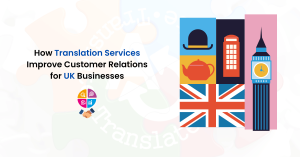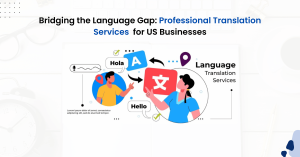There are a number of distinctions when it comes to the discussion of techniques such as subtitling, captioning, dubbing, and voiceover within the language industry. Although all of them fall under the realm of translation or interpretation services, they are quite different from one another.
Subtitling: A commonly known example for subtitling would be of Netflix or similar streaming platforms offering subtitled video content of the spoken dialogue in a number of different languages, excluding the source language. This enables them to appeal to a wider audience with varied language preferences.
Captioning: Whereas captioning, would be referred to as just the transcription of the video content in its original language. This text version of the audio can be further divided into open and closed captioning. Open captioning is offered as an inherent part of the video content and cannot be turned off. On the other hand, the closed captioning service while viewing the content is optional. A good example of this is the availability of the option button for generative captions on Youtube videos.
Although originally intended for the hearing impaired, captions are now widely used in today’s world for a number of reasons which are explored further in this article.
Voiceover: This technique specifically concerns itself with translated voiceover narrations which are placed over the original spoken dialogue of the videos. This kind of technique is not emotive but more descriptive in nature and may not always take the form of a verbatim report. Voiceovers are more commonly adopted in the corporate world in order to deliver training and informational videos.
Dubbing: Out of all the above-mentioned techniques, special care and effort must be taken to ensure accuracy while providing dubbing services. The important features of this technique involves perfect lip-synching of the spoken dialogue, accuracy in tone and emotion, selecting the best suited talent.
At TRANSLIT, we offer all of these services while maintaining exceptional quality and authenticity standards.
For non-native speakers of any language, consuming content outside their spoken language is quite a task. This is when services such as subtitling and dubbing come into play to close the language barriers around video content. It is known from research that kids pick up any language quicker when they consume content with the use of subtitles. Not only for kids, but consuming content such as movies, tv shows, and more with subtitles also play a key role for people from all age groups who want to acquaint themselves with learning a new language and its nuances.
Subtitling can be defined as the art of developing written content based on spoken dialogue through visually communicated videos. These videos may be in the form of a film, television series, web series, informational/educational content, gaming and so much more. Apart from the source language viewers, subtitles are mainly used as a tool to promote and expand the reach of a company’s viewership base for its videos, thus overcoming the limitations posed by languages and cultural differences.
The next important question to ask would be, how do you know which one is best suited to your business needs? The answer depends on the following three factors:
1) Your motivation for developing content and therefore the content type: It is important to determine the motive behind the video and the appropriate type of translation or interpretation services to be used. For example, if a multinational company wishes to create an internal communications informational video, it may be better understood when dubbed into another language along with developing the correct subtitles.
2) Your viewers’ preferences: In this case, the company may be required to identify its demographic’s key content consumption patterns as well as the amount of time spent on the particular medium. Based on research, 85 percent of videos are watched without sound on Facebook.
3) And most importantly, your budget: Choosing an option such as dubbing brings with it a number of expenses including but not limiting to, employing voiceover actors, dubbing equipment, studio space, editing, etc. All these factors contribute to an increase in costs for companies opting for this service. Hence, it is important to weigh the financial requirements concerning your business project while opting for such services from a translation and interpretation services company.
With smooth-sailing customer service, TRANSLIT will take care of all your language needs to help you build that everlasting bond with your customer.
/By Sayali Khartadkar// Intern, TRANSLIT//








